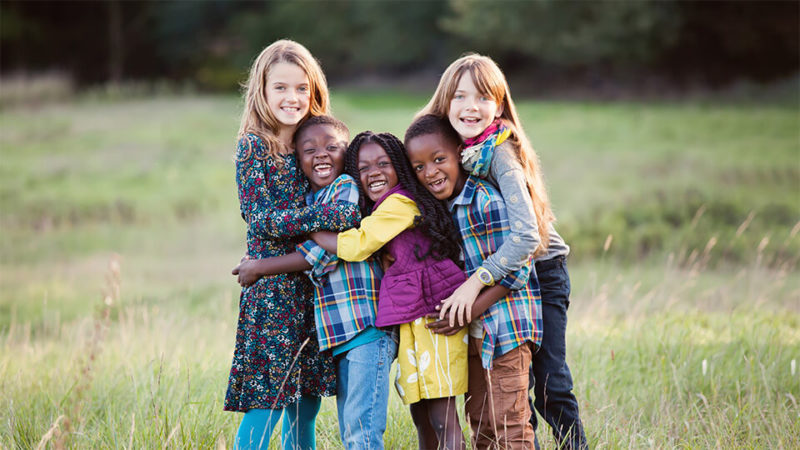Adoption and the Experience of Biological Siblings—Part I

Dr. Jana Hunsley is a licensed clinical social worker, phycologist, and TBRI® practitioner who has studied the effects of adoption on biological siblings. Part one of this series explores her findings on the experience of biological siblings when a family grows through adoption, and part two explores her recommendations for improving that experience.
Part One: Understanding Common Experiences
When a family grows through adoption, every member of the family experiences adjustments. Adoption education often focuses on preparing parents to meet the needs of the child they’re adopting, but it’s just as important to prepare resident children to welcome a new sibling because without an informed approach to family integration, biological siblings can experience invisibility, parentification, peacemaking, or secondary trauma. Let’s dive into what each of these means.
Invisibility
The feeling of invisibility occurs during the transition of bringing a child into the family through adoption when parents lack the capacity to continue attending as consistently to the other children in the home. Although parents may feel that the all-consuming nature of the needs of the child they’re adopting are temporary, this relational pattern can become chronic. Parents unknowingly tell themselves that the other children in the home are okay and can manage without their support, but children may interpret this to mean that their needs—thus they—are less important, or that their parents value them less. Over time, these feelings of invisibility may lead to low self-esteem and impact other relationships in their life.
Parentification
Parentification refers to when children become their parents’ emotional support, or act as a parent to their siblings. Some children enjoy feeling like they are contributing to meeting the needs in the home while others resent having to provide emotional support because it wasn’t their choice to add so much additional stress to their environment. Either way, parentification is not ideal because it can lead to relationship and mental health issues as children grow up.
Peacemaking
When a child embodies a peacemaking role, it’s a sign that they sense their family’s stress and feel compelled to decrease it. They will act in ways that they believe will ease tension and make efforts to mediate but this worry and possible repression of complex emotions to keep the peace, is unhealthy for children, especially since no matter how hard they try, they can’t relieve their family’s stress by themselves.
Secondary Trauma
Secondary trauma happens through exposure to a person who has experienced trauma. Since adoption inherently involves the loss of a child’s first family, a child who is adopted may bring trauma they have not healed from to their adoptive family. When biological siblings listen to stories of what their adopted sibling experienced and witness the emotional and physical effects of their trauma on a daily basis, it can lead them to internalize it as their own trauma. Children may initially react with empathy and compassion but in time unknowingly begin to display similar emotional and behavioral challenges as their adopted sibling.
Being informed on the experience of biological siblings through the adoption process is a great step toward cultivating a smooth family integration. Dr. Jana Hunsley has five strategies that will further support your family through this adjustment. Stay tuned for part two!